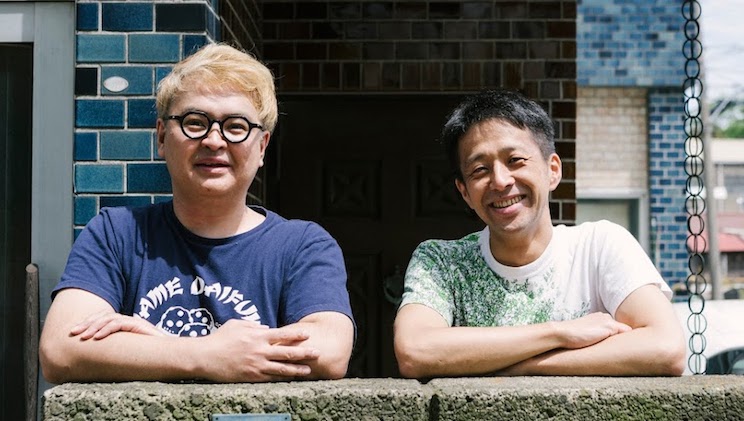Giving the Next Generation a Connection to City Pride. The “Beginnings” and “Future” of Nihonbashi Stimulus Projects Underway at Mitsui Fudosan.
Giving the Next Generation a Connection to City Pride. The “Beginnings” and “Future” of Nihonbashi Stimulus Projects Underway at Mitsui Fudosan.

Located at the crossroads of the Edo Five Routes highways during the Edo era (1603-1868) of Japanese history and holding a key location on the sea with a riverside fish marked, Nihonbashi has historically been a confluence of people, products, and ideas. The city prospered as a hub for finance, shipping, commerce, culture, and more, overcoming countless struggles during and after the Meiji Restoration (1868) to continue thriving. However, with the collapse of the 1992 Bubble, its presence diminished suddenly from the mid-90s onward with a series of financial crises. With roots in the Mitsui Echigoya Gofukusho (Echigoya) clothing company founded in 1673, real estate firm Mitsui Fudosan began work on stimulus projects that brought together government and private groups alongside local residents. Those projects are now around 20 years old. In this issue, Mitsui Fudosan Nihonbashi Urban Development Promotion Department employee and Bridgine editorial department member Ms. Aya Sakamoto interviews the man who took the reins of the “Nihonbashi Stimulus Project,” Mitsui Fudosan Managing Director and Executive Vice President Yoshikazu Kitahara, exploring his thoughts on Nihonbashi as a city and behind-the-scenes stories from the plan.
The First Steps by the Nihonbashi Stimulus Plan, Against a Headwind.
Ms.Aya Sakamoto(Sakamoto) : First, could you please give us a brief history of your career since joining Mitsui Fudosan, Mr. Kitahara?
Mr.Yoshikazu Kitahara(Kitahara) : I joined the company in 1980, and worked for about five years on getting consent from agricultural land and woodland owners for housing development in the Kanto area. When I went to speak with a farmer for my first job, he was furious and screamed “what the hell are you here for?!” and threw hot tea on me right as I walked up to his house. I remember handling that sort of thing (laughter). Later, I was transferred to the Okayama branch, then called to the Hiroshima branch about four months later, where I got involved in land reclamation business. That shifted my venue from the land to the sea, and my main job was negotiating with fishermen. But at first, even if I gave out forms, it was rare for any money to be involved. Still, after meeting with people time after time, in the end they started to quietly give in and sign. Having built relationships of trust like that is a very positive memory for me. That sort of work taught me that our job is to strike an overall balance in a world with no absolutely correct answers, among people with their own individual values.

Mr. Yoshikazu Kitahara, Vice President of Mitsui Fudosan and founding proponent of the “Nihonbashi Stimulus Plan.”
Sakamoto : When did you return to Tokyo after that?
Kitahara : I returned to the main office 13 years after joining the company, and after eight years of work at branch offices. On returning, I worked as an acting department head for leasing sales for buildings centering on the Chuo City area. The office building market had collapsed at the time, since the bubble had just burst, and the company management was in a tight spot, too. With a series of fiscal crises underway, Nihonbashi was seeing businesses with history stretching back to the Shirokiya era like the Tokyu department store close their doors, and the city was losing its commercial energy. We acquired the empty location after some negotiations, but then Mitsui Fudosan share prices plunged partway through the deal. It was terrible inside the company, with the vague efforts to comfort us from everyone nearby making things worse even than the people raging about how “it’s all because you make stupid purchases.”
Sakamoto : The building you acquired at the time was the Nihonbashi 1chome Building, which would go on to become COREDO Nihonbashi. That was the first construction project of the Nihonbashi Stimulus Plan, wasn’t it?
Kitahara : Yes. At the time, the company was somewhat skeptical about prices in the Nihonbashi area, but it was where the Mitsui Group was founded, and all told, it was also the site of the headquarters of Mitsui Fudosan, a core company. Despite that, the company’s archetypal structures published in pamphlets and other guides were the Kasumigaseki Building from 1968, or the Shinjuku Mitsui Building from 1974, and so on. That was because our business in Nihonbashi had faded down to a trickle some time ago. It would just be something to accept if we tried and failed, but giving up on the city without even trying felt wrong to me. I think that inspired me to rebel and fight to do what I could, and since the executives – led by Hiromichi Iwasa (the current Chairman) who was president at the time - secretly wanted to do something, too, I was able to get co-signers for the Nihonbashi 1chome Building project even with lots of opposing views present.

Ms. Aya Sakamoto of the Nihonbashi Urban Development Promotion Department at Mitsui Fudosan, our interviewer for this article
Communities That Know Each Other’s Faces Even in the City Center Today.
Sakamoto : Do you think you felt more strongly about Nihonbashi, coming from a background in a working-class Tokyo neighborhood, Mr. Kitahara?
Kitahara : I suppose so. We use the word community a lot lately, and I do feel that cities are a sort of collective body. I was born and raised in the Ueno neighborhood, which I would say is primarily a residential area, and while on one hand Nihonbashi has been a business district since the Edo era, on the other it is quite special in having also maintained a community where members know each other’s faces. There are very, very few places that have this special quality in the city center, and I think it should be a point of pride. It’s extremely rare for cutting-edge companies to have chances to be involved in ancient cultural activities that have been around for ages, like they do when corporate tenants in the area carry the Mikoshi portable shrine for the area.
Sakamoto : When you’re in touch with the established small business owners of Nihonbashi, they seem to get along well as a group, and drink together almost weekly. Nihonbashi feels like a city with a down-home feel, where everyone is connected like a big family. At a glance, it might feel exclusionary, but the barriers to entry are surprisingly relaxed. I think of it as a place where once you’re accepted, you’ve found your second home.
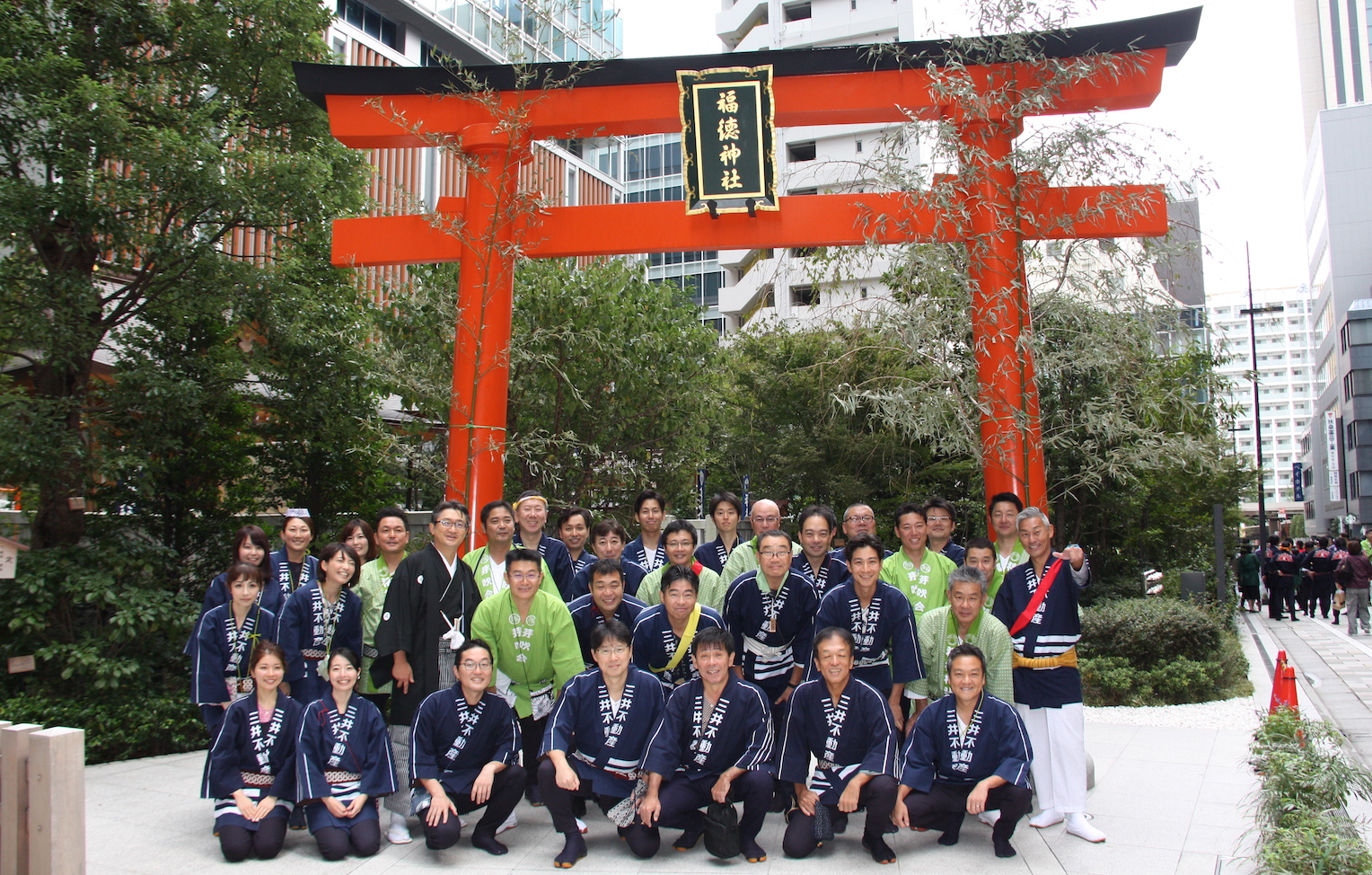
Kitahara : I take the same sensations as a sort of “big city countryside,” or an organic collective with a sort of village spirit of mutual aid. It’s similar to the part of the city I grew up in, in some ways, and while I struggled a bit with the lack of privacy as a child (laughter), I feel like this sort of community is good enough to more than balance that out.
Sakamoto : How do you view Nihonbashi’s history?
Kitahara : Tokyo has weathered incidents like the 1923 Great Kanto Earthquake and the bombing of WWII and made miraculous recoveries, and Nihonbashi qualifies as a symbol of those. For example, the restoration of the Mitsui Main Building in Nihonbashi occurred against a backdrop where Mitsui Zaibatsu Director-General Dan Takuma wanted to encourage the citizens by constructing a building in Tokyo that would never fall, when the city was reeling from massive damage during the Great Kanto Earthquake. Since Nihonbashi carries the weight of 400 to 500 years of history stretching back to around the Edo era, it’s extremely important that we consider what we can do to help pass down the legacy of the past to the next generation, as well as considering current profits.
We wanted to create a place that could serve as an emergency shelter for Tokyo residents reeling from major disasters like the Great Kanto Earthquake like the old Mitsui Main Building, and that was at the root of the Nihonbashi Smart City project we are currently progressing on, as well.

The Mitsui Main Building upon its completion. (Image provided by: Mitsui Fudosan)
From a Point to a Line, then a Plane. A Relay Between Interconnected Generations.
Sakamoto : What sort of vision did you have as you worked on revitalizing Nihonbashi as a city, with these special traits we’ve discussed?
Kitahara : From a perspective focused on inter-area competition, the issue for the Nihonbashi of the time was how to catch up to and surpass Otemachi and Marunouchi. Those two areas sandwiched Tokyo Station between them, and were well ahead in development. At the time, I thought that value in the Nihonbashi area would rise if we could develop a crossroads, envisioning it as a Wall Street conversion for Eitai-dori street and a Fifth Avenue conversion for Chuo-dori street. I declared that it would stand equal to Otemachi and Marunouchi in rents and surpass them in commercial area, but even my subordinates said that “you’ll embarrass us if you keep saying that.” And that was how conversations about it ended. But right around the same time, several local companies, businesses, and groups felt that Nihonbashi was in danger, and launched the “Nihonbashi Regional Renaissance Century Planning Committee” in order to restore the city’s past lively energy. The ability to coordinate with this local body’s activities gave me a tailwind, and we were able to pull together as an area to make progress on revitalizing Nihonbashi.
Sakamoto : The Nihonbashi Stimulus Plan began in the late 1990s, and its first project was the opening of COREDO Nihonbashi in 2004. Then, in the second stage – which was inspired by the opening of “COREDO Muromachi 2 and 3,” the plan has focused on four keywords in “industry creation,” “neighborhood creation,” “regional coexistence,” and “marine stimulus.” It promotes urban development through a fusion of soft and hard methods. How do you view these changes, Mr. Kitahara?
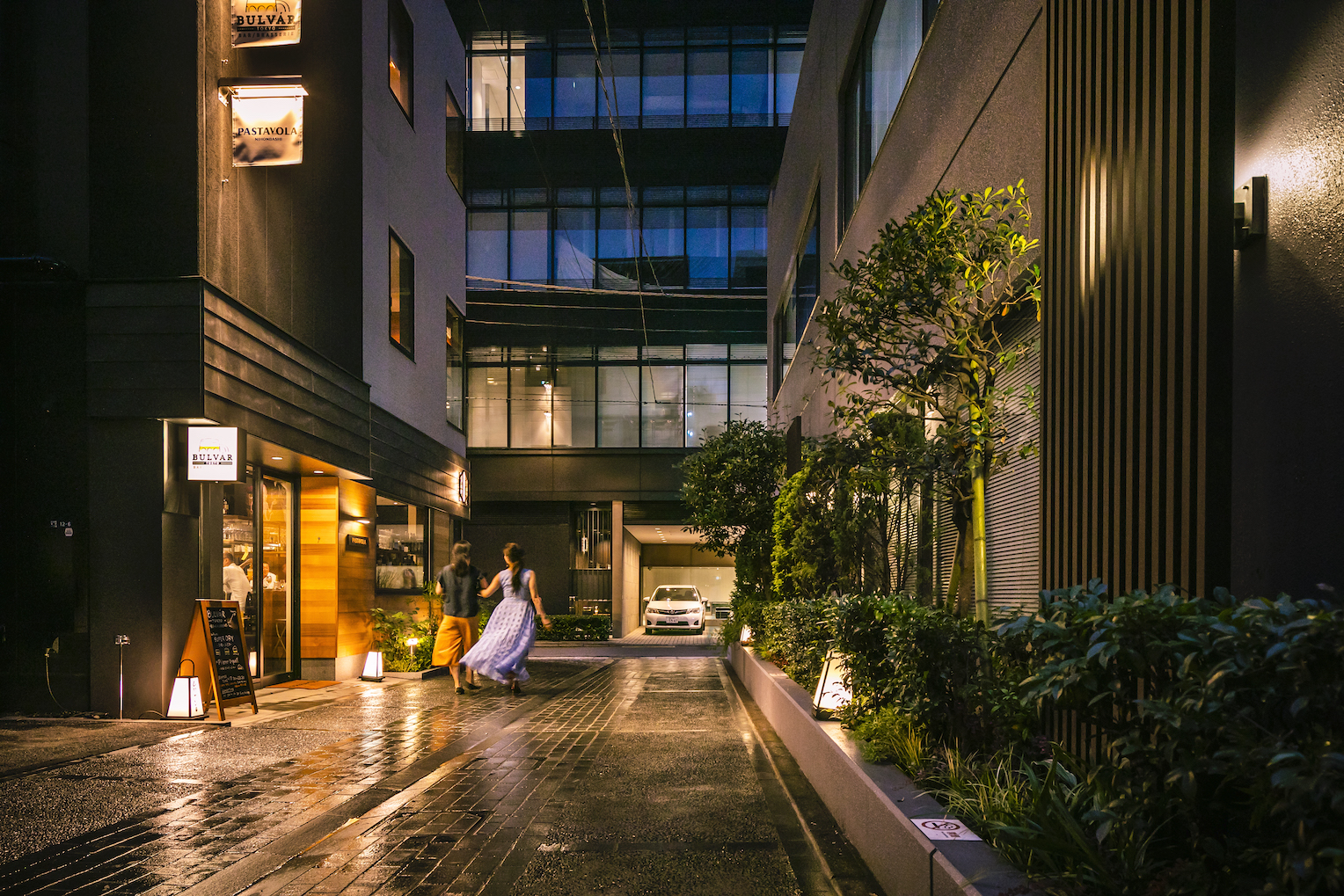
“Neighborhood creation” is one keyword for the second stage of the project, and envisions the creation of interconnected, lively energy through development of streets people want to walk down. (Image provided by: Mitsui Fudosan)
Kitahara : When we acquired the Nihonbashi 1chome Building, we held just two points in north and south Nihonbashi, with it and the Nihonbashi Mitsui Tower, where progress was underway. Afterwards, we built COREDO Muromachi 1, 2, and 3, and our “points” formed a line. Then we developed locations like Fukutoku Garden and the “line” became a plane. This wasn’t something we achieved overnight; it’s the result of a relay with several links between me and your generation, Ms. Sakamoto. I think the unbroken series of handoffs over that relay is precisely why Nihonbashi is so lively now.
Sakamoto : It has been 20 years since the company acquired the Nihonbashi 1chome Building, if you stop to count. How do you feel about the changes the city has undergone over the time?
Kitahara : It would be rude to say Nihonbashi was a ghost town when I joined Mitsui Fudosan, but the city was almost empty at nights and on weekends, and almost no one came here for a night out after work. Compared to that era, it’s not overstating it to say that everything is different now. In addition to tangible changes like progress on development of buildings, you can also sense that the city as a whole is regaining its health.

The City’s Character, as Seen When Looking Back to Our Origins.
Sakamoto : After the completion of the Nihonbashi Muromachi Mitsui Tower (COREDO Muromachi Terrace) in 2019, the Nihonbashi Stimulus Plan is advancing to Stage 3. The plan is structured around key points like “creation of new industry.” What do you think is required in urban development for Nihonbashi, going forward?
Kitahara : Currently, we are making progress on LINK-J projects in aims of developing sites and building communities for activities by players in the life sciences field, and I think this sort of urban development with an eye toward industry creation may be something that will be critical in the future. Nihonbashi has also always been a city where arts and culture thrived, as an area for tradespeople and artisans. I think it would be great to reinforce our cultural themes, like art and music. Considering Nihonbashi’s history, I think setting themes with stories to them is going to be a key point.
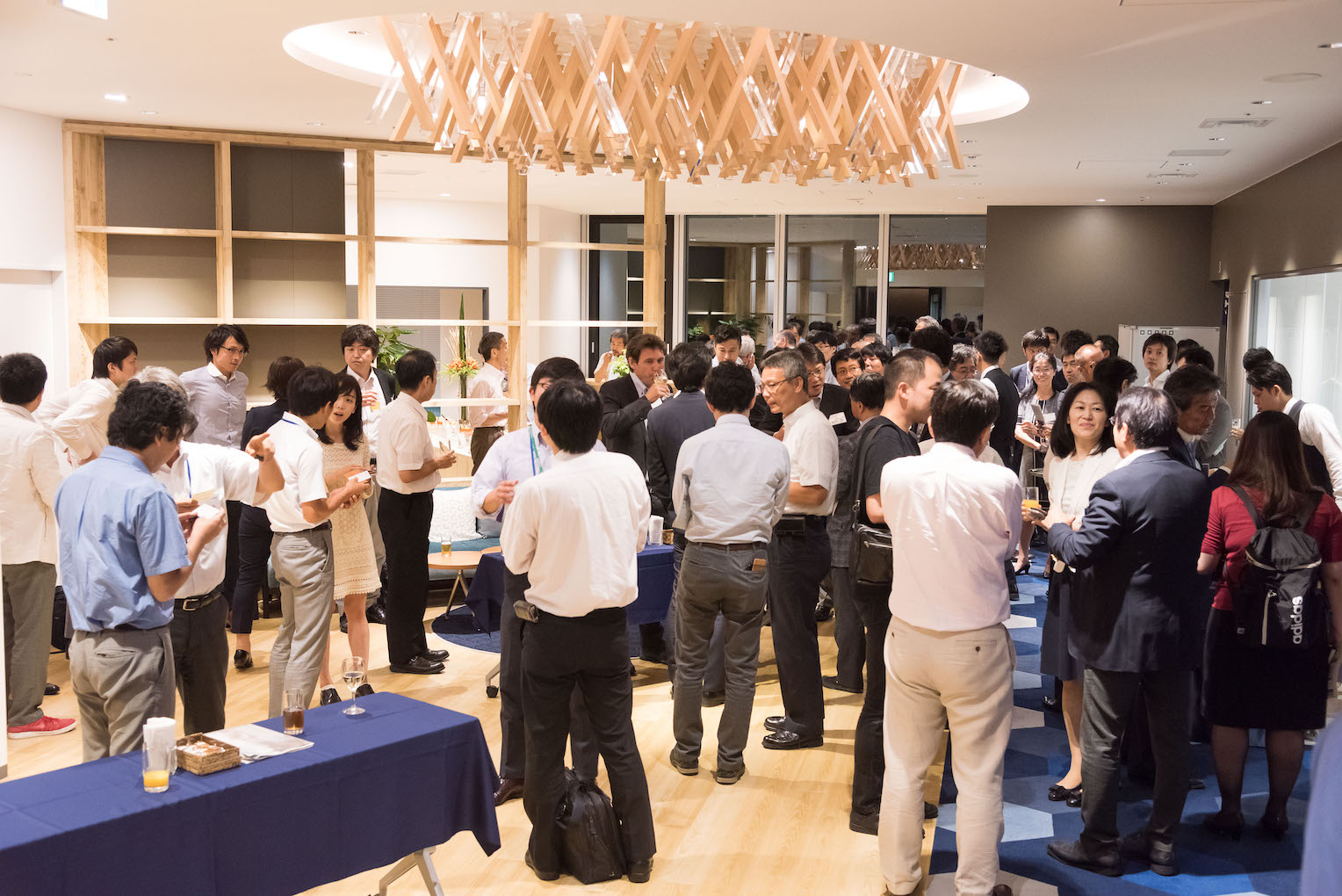
The Life Science Innovation Network Japan, Inc. (LINK-J) was founded in order to form a cluster of life sciences sector players headed by the pharmaceutical industry, and to attract these to Nihonbashi, a city once filled with rows of pharmacists’ shops in the Edo era. The group holds events focused on life sciences, and works to develop a diverse range of sites for the sector, including rental offices and shared lab spaces. (Image provided by: Mitsui Fudosan)
Sakamoto : The efforts so far have boosted concentrations of people and companies in the life science sector here. What sort of things do you think are required from the city in order to further accelerate growth for this sort of new industry?
Kitahara : Cities like Boston and Cambridge are good examples of how industry often arises in a way that forms a set with local academia. Nihonbashi has several universities inside just a five-kilometer radius, and I want to gradually attract actual academia to the Nihonbashi area. I think it would be preferable for groups like LINK-J to fill that role, as on-the-ground agents.
Sakamoto : The Nihonbashi Stimulus Plan has done a lot to rejuvenate the area, but I still feel that there aren’t that many young people here. That’s another point where attracting universities and research institutions would be a major goal. People predict further changes for Nihonbashi in the future, too. In contrast to that, what are your thoughts on things that we need to treasure as they are?
Kitahara : At Mitsui Fudosan, we have declared out intentions of creation a smart city that makes a sharing economy into a reality, using IoT, big data science, AI, and other technologies together. We have positioned Nihonbashi as a key site for that. But when you reflect on it Nihonbashi has always had an established sharing economy, with community groups watching for suspicious characters around neighborhoods, and people sharing with their neighbors in the spirit of mutual aid, like I mentioned earlier. And since the population has increased massively since then, and companies and residents are more diverse, we need to respond by supplementing the weak points with advanced technology. But that alone would make the city homogenous, like any other city. The most important thing is to preserve and pass down the good old sharing economy “where everyone recognizes each other.”
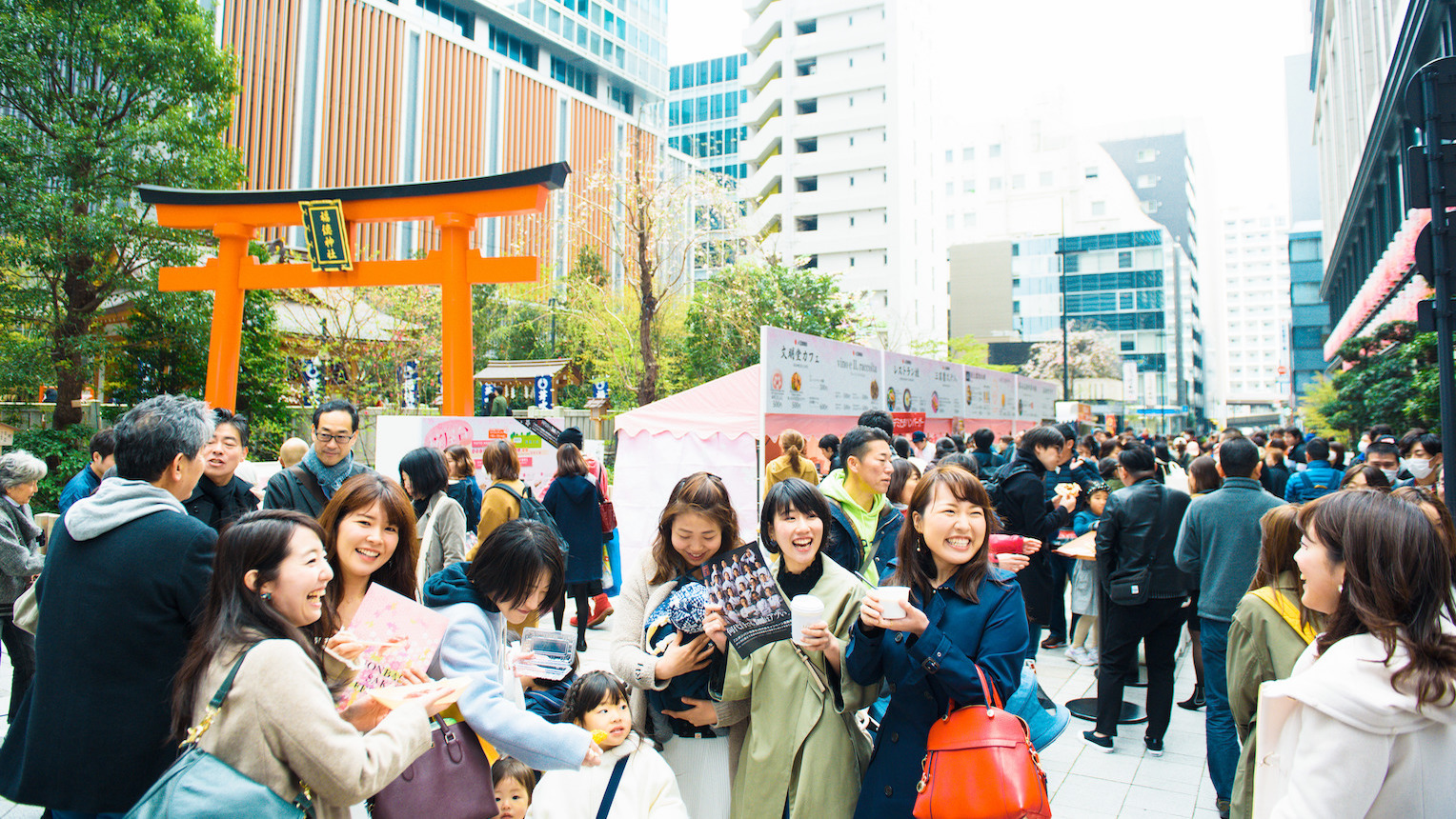
A Message to the Future, Broadcasting from Nihonbashi.
Sakamoto : At Bridgine, we try to value the philosophy of “carrying on the initial legacy, and creating the future together” as we move forward. It sounds like the communities you mentioned are an important cultural pillar of Nihonbashi, and one we need to hand down to the future.
Kitahara : I feel that the bonds that the established small business owners of Nihonbashi treasure are the true spirit of the area, and to put it differently, I think those are the spirits of “tightening one’s belt” and “self-sacrifice.” The world is forgetting those values right now, everyone thinks only of themselves. I think that’s precisely why the spirit and culture that have developed in this part of the city are growing in value. I don’t want Nihonbashi to lose the spirit of mutual aid and the mature charm it prided itself on over its 400 years of history.
Sakamoto : At Bridgine, we aim to create change and new connections across the city, as well as to broadcast information about the city to the outside world through media. Please share what you would want for a future Nihonbashi, Mr. Kitahara.
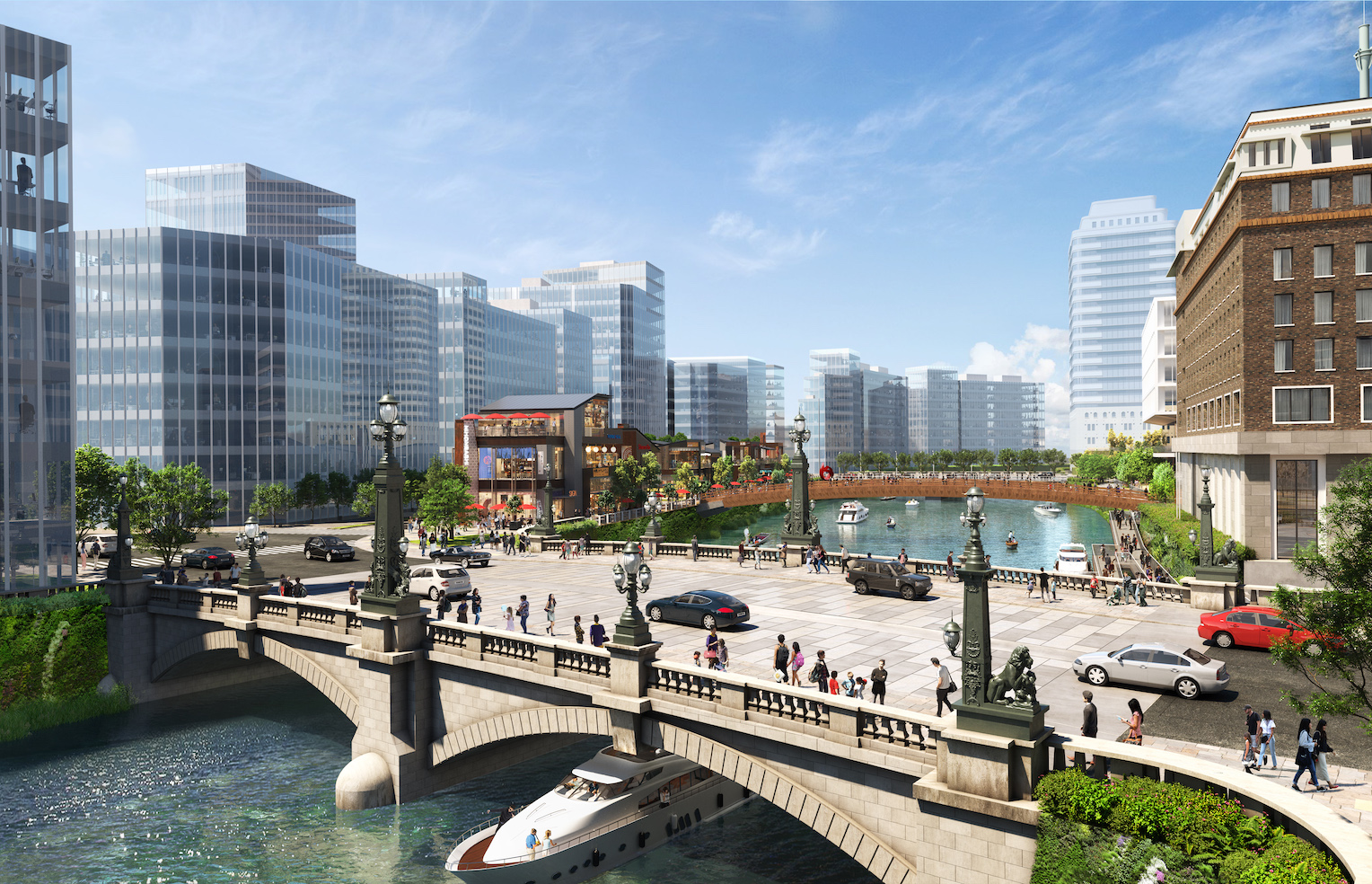
An illustration of Nihonbashi in the future, with the Metropolitan Expressway moved to an underground tunnel. (Image provided by: Mitsui Fudosan)
Kitahara : When I look at the world, I want to work to convey the character and appeal of Nihonbashi to people of diverse nationalities, ethnicities, and values. I have quite a few opportunities to talk up Nihonbashi overseas, and an extremely large number of them take an interest in the city. I feel that there are definitely lessons the world needs to take from Nihonbashi’s spirit. I feel that leaders all over the world could learn something if we were to show them the spirit and culture we pride ourselves on, that sort of attitude that thrives in Nihonbashi, or working-class Edo neighborhoods. I think it would be great if people involved in urban development for other areas came to Nihonbashi to learn.
Sakamoto : That topic connects to our urban development vision of “Nihonbashi, the crossroads of the highways to the future.” Of attracting people, products, and ideas to Nihonbashi from around the world, and sharing new value with the world from the city. The aim is for the city to develop the drive and broadcasting power for that, isn’t it?
Kitahara : I feel that spirit will be an important factor alongside advanced technology in the new era, not just in terms of regional revitalization. Also, western company leaders are showing a strong interest in spiritual culture, with Zen foremost. Furthermore, young people grouped into the millennial generation and generations Y and Z have values that are distinct from past generations who worked for “growth,” with an increasing rate of social entrepreneurs and so forth. On the other hand, there are also negative processes kicking off around the world, with people becoming terrorists to escape poverty. I feel that there are hints for future with the spirit of mutual aid and a culture of interpersonal bonds cultivated in working-class Edo areas to be found here, precisely because of the characteristics of this era. Without overstating things at all, I think that given how it typifies these traits, Nihonbashi needs to be aware of itself as a goal people around the world aspire toward. I also feel it will be critical to increase the number of people who sympathize with us on that, while also maintaining and expanding our community.
Finally, people right now are experiencing a painful reminder of how precious our “everyday” life is, and how dangerously fragile it is, with the Novel Coronavirus Pandemic. The current Corona Shock to markets might be a sort of alarm bell from the heavens, informing us that we were wrong about our everyday lives being “a given.” The opposite of a given is “the inconceivable.” And precisely because something is “inconceivable,” it can also be “much needed.” Let’s all come together as a single humanity to overcome Coronavirus and build a society that we can all be grateful to live in, for the sake of the future. We will achieve that goal through our individual self-awareness and resolve. Right now it’s time to show the world the Nihonbashi attitude and Edo-style interpersonal connections.

Text: Yuki Harada (Qonversations), Photography: Daisuke Okamura
Mitsui Fudosan Co., Ltd.
The company leverages its wide-ranging domestic business network and engagement in diverse business sectors toward mixed-use urban development. In Nihonbashi, Mitsui Fudosan is progressing with its “Nihonbashi Stimulus Plan” – which unites government, private, and local forces – around a development concept of “creating while revitalizing and preserving.” They are advancing diversification of urban functions and stimulus for a lively city, while engaged in urban development leveraging regional resources.
